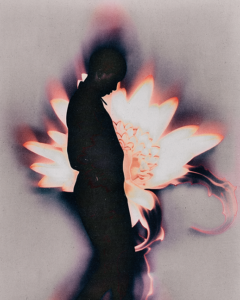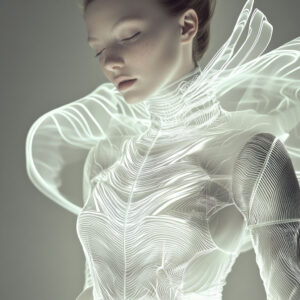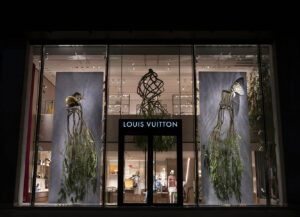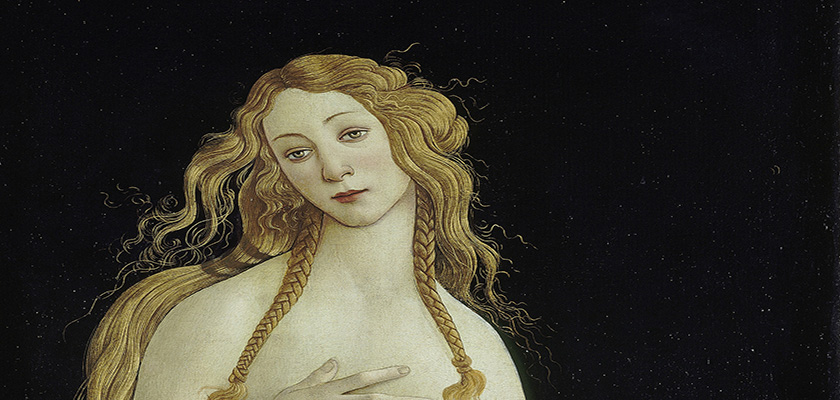
Botticelli’s Birth of Venus should be celebrated in today’s cynical condemnation of femininity.
In an increasingly dominated time where the mere notion of femininity is shunned upon by both men and women, not just in certain cultures and religions but also in the intellectually awaken western society, Lucy Self, Editor at Large, explores the beauty of being feminine.
There is a massive discrepancy in the adjectives we use to describe femininity so often associated with all that is negative; fragile, irrational, frivolous, ornamental, manipulative and tantamount to artificial, with the obvious strength and resilience of womankind.
We are so often accused of using our female charms to seduce, cajole and manipulate men into an inferior position, so taking advantage and eventually enslaving our poor innocent victims and ultimately deserving our inferior pay check and sexist treatment.
This myth—that feminine allure is primarily designed to attract male attention—exists for a single reason: It enables the societal-wide sexualization of women. If we believe that a woman wore a pretty dress because she is trying to pique men’s interests, then suddenly catcalls, sexual innuendos and ogling seem legitimate; after all she did get ‘dolled’ up exactly for that reason and so is incidentally ‘asking for it’.
Which makes the enigmatic beauty of The Birth of Venus, the Renaissance masterpiece by Botticelli so relevant to modern society.
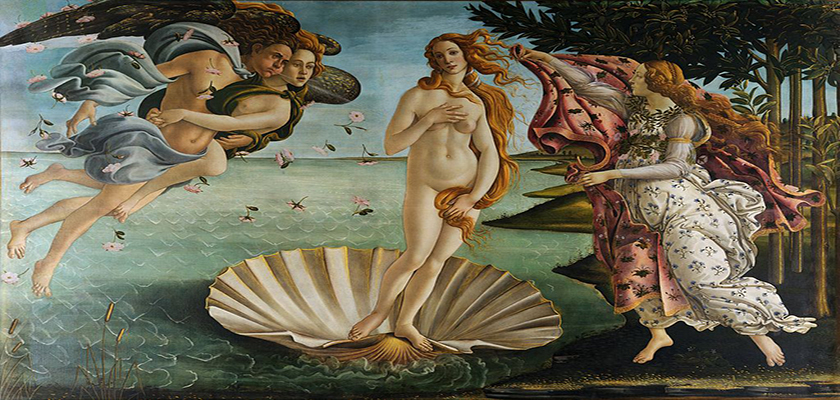
Tempera on Canvas. 172.5cmx278.9cm. Uffizi, Florence
Painted in 1484, the goddess of love is portrayed as born from the pure scallop shell in an perplexing self-conscious awareness that despite her purity and obvious nudity, her tantalizing sensuality and shocking liberty is inspiring.
Despite her modest pose, one nude breast manages to enthrall, captivate and inspire hundreds of artists to copy this masterpiece but also for the painting to be admired thousands of years on. But nudity was not what fascinated Botticelli himself. This can be clearly seen from his painting Primavera: The Three Graces.
Shrouded and discreetly alluring under shrouds of gauze, the three graces can be seen with slender limbs delicately dancing. It is the fascination, awkwardness and ultimately desire that it inspires that beguiles us still today.
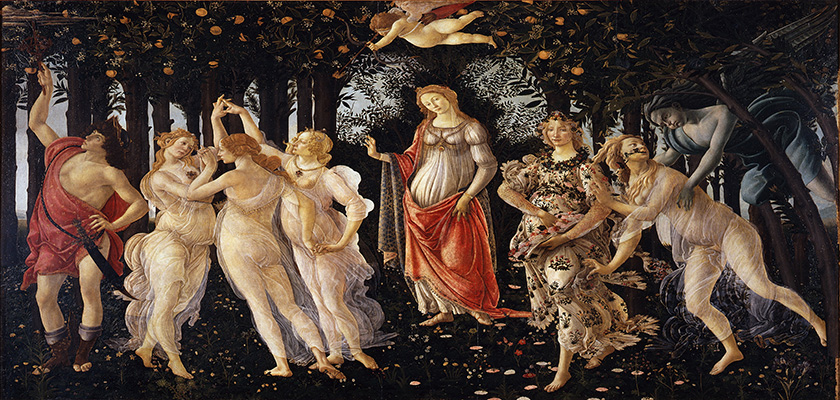
Tempera on Panel. 202cmx314cm. Uffizi, Florence
Botticelli portrays a gentle female beauty: a tender, disarming vulnerability that is so inherent in female kind, yet with the knowing almost challenging look his females give that makes the viewer aware they are aware of this powerful charm they wield. Behind the innocence is knowledge, but does that make it manipulative or simply human? Surely feminine power is in the contradictive nature that a woman is both vulnerable yet ultimately capable; in fact ferociously adept at survival, despite our physical comparative weakness?
Venus has power and her gaze commands both respect, awe and humility. The fact that women have this quiet strength that commands attention should be celebrated not shunned. If only womankind globally could be admired for our unique qualities, rather than made to feel cheapened and inferior.
